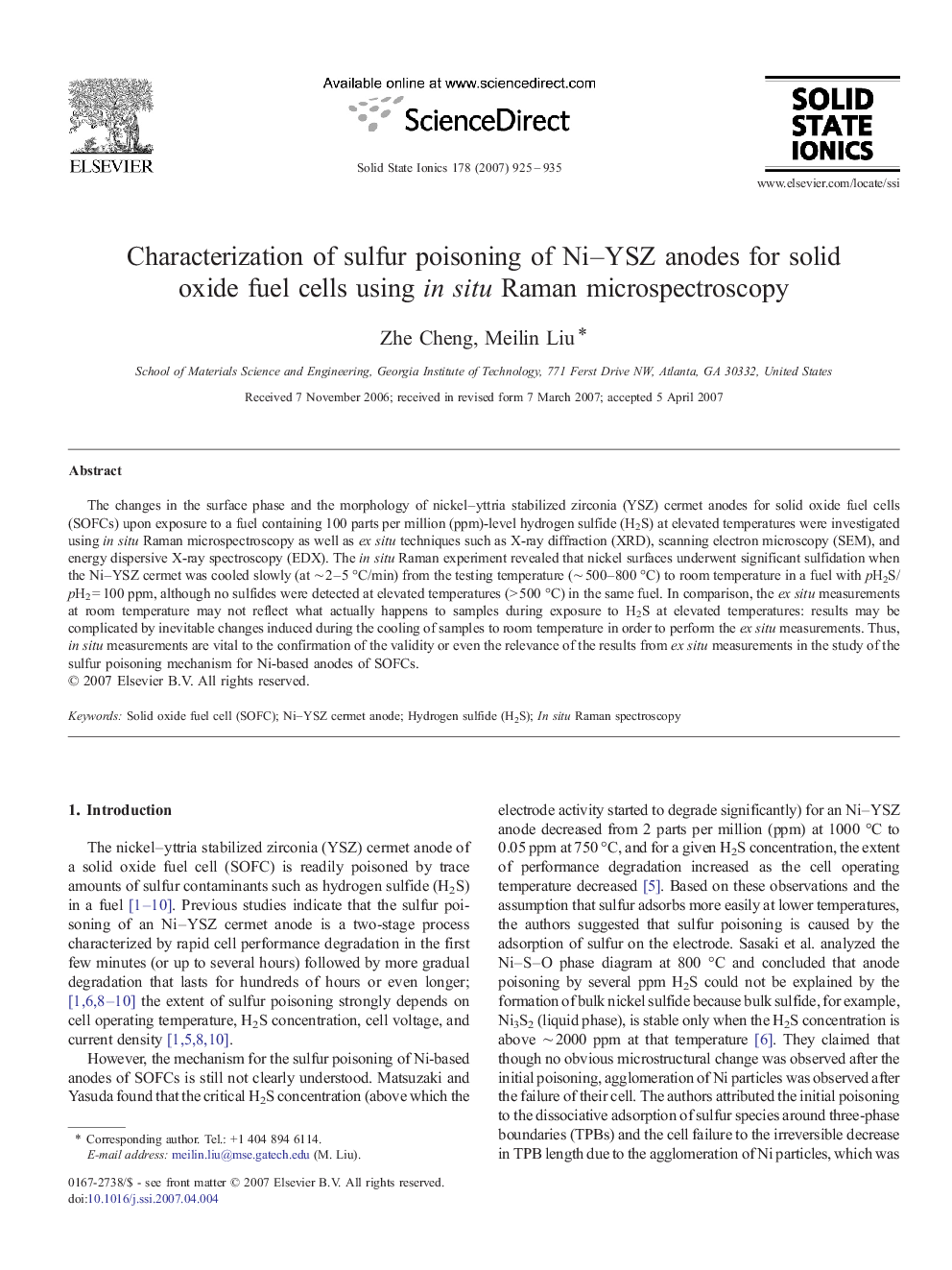| Article ID | Journal | Published Year | Pages | File Type |
|---|---|---|---|---|
| 1295315 | Solid State Ionics | 2007 | 11 Pages |
The changes in the surface phase and the morphology of nickel–yttria stabilized zirconia (YSZ) cermet anodes for solid oxide fuel cells (SOFCs) upon exposure to a fuel containing 100 parts per million (ppm)-level hydrogen sulfide (H2S) at elevated temperatures were investigated using in situ Raman microspectroscopy as well as ex situ techniques such as X-ray diffraction (XRD), scanning electron microscopy (SEM), and energy dispersive X-ray spectroscopy (EDX). The in situ Raman experiment revealed that nickel surfaces underwent significant sulfidation when the Ni–YSZ cermet was cooled slowly (at ∼ 2–5 °C/min) from the testing temperature (∼ 500–800 °C) to room temperature in a fuel with pH2S/pH2 = 100 ppm, although no sulfides were detected at elevated temperatures (> 500 °C) in the same fuel. In comparison, the ex situ measurements at room temperature may not reflect what actually happens to samples during exposure to H2S at elevated temperatures: results may be complicated by inevitable changes induced during the cooling of samples to room temperature in order to perform the ex situ measurements. Thus, in situ measurements are vital to the confirmation of the validity or even the relevance of the results from ex situ measurements in the study of the sulfur poisoning mechanism for Ni-based anodes of SOFCs.
